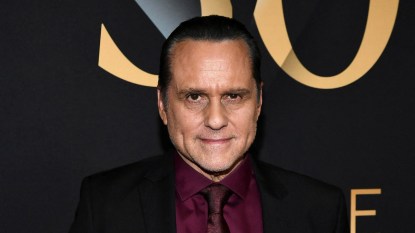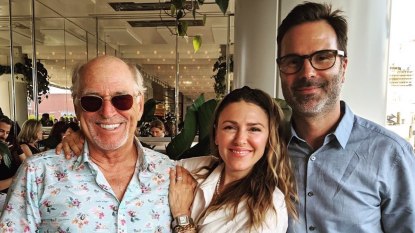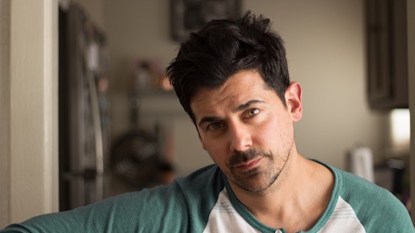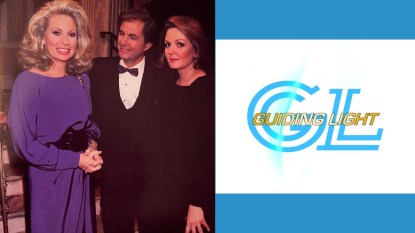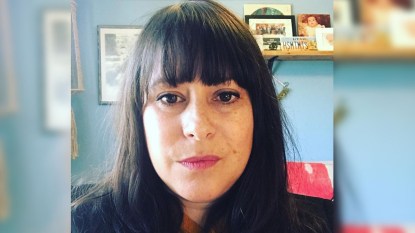DARK SHADOWS Remembered: 6 Surprising Facts About TV’s Classic Supernatural Soap Opera
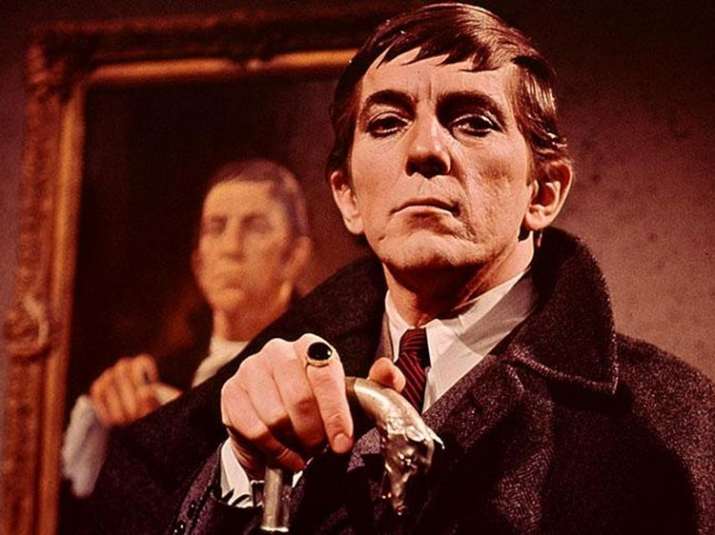
Let’s get a couple of things straight: Despite what Twilight would have you believe, vampires don’t sparkle in the sunlight. They burn, they disintegrate, they turn to dust. They also don’t want to fit in so badly that they go back to high school (we’re talking to you, VAMPIRE DIARIES). And Millennials, please take note: Bill Compton of TRUE BLOOD, Angel of BUFFY THE VAMPIRE SLAYER, and even Anne Rice’s Lestat were not the first angsty, sexy vampires. That honor belongs to Barnabas Collins, resident member of the undead on television’s only gothic horror soap opera, DARK SHADOWS.
Airing each weekday afternoon on ABC from June 1966 to April 1971, DARK SHADOWS brought vampires, werewolves, and ghosts to daytime television and America’s living rooms, making superstars of Jonathan Frid’s Barnabas Collins, David Selby’s Quentin Collins, and Lara Parker’s Angelique Bouchard, among others.
And by “superstars,” we mean superstars. When Frid went out in public, he was regularly swarmed by thousands of fans who wanted to catch a glimpse of him. “It was the time of The Beatles,” he said, “and I was getting something of the same kind of treatment that they were.” He was also getting tons of fan mail, including naked photos of women from around the country who were begging him to bite them.
It was an odd time.
If you’re one of the many people who used to run home from school every day to watch the fantastic oddity that was DARK SHADOWS, you’re officially a member of Generation DS, and this collection of little-known facts is for you.
1. DARK SHADOWS was almost cancelled in its first year.
A gothic romance novel brought to life, the series originally dealt with strange happenings with the Collins family at their mansion Collinwood, with occasional brief trips into the world of the supernatural for an errant ghost here and there, or a phoenix wanting to lure her son into the flames. But overall, it wasn’t connecting with the audience.
“The show was limping along, really limping,” head writer Sam Hall remembered, “and ABC said, ‘We’re canceling it. Unless you pick up in 26 weeks, you’re finished.’ [Series creator Dan Curtis] had always wanted to do a vampire picture, so he decided to bring a vampire — Barnabas Collins — on the series.”
That’s when everything changed.
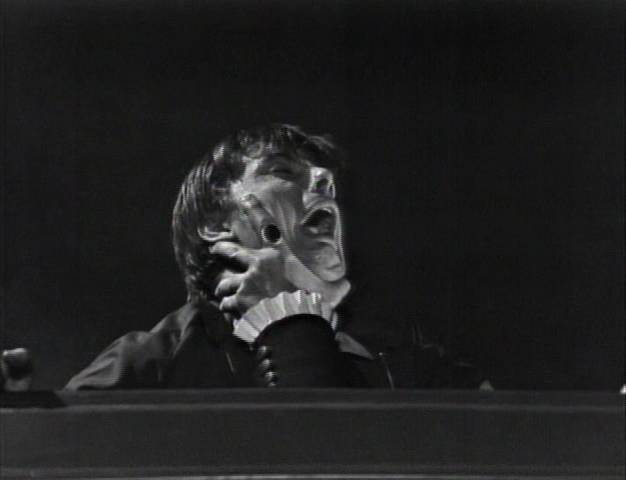
The concept was that the 175-year-old Barnabas was inadvertently freed from his chained coffin and immediately showed up at Collinwood. There he passed himself off as a cousin from England and was invited to live in the family Old House on the property. He did so, and began a secret reign of terror, as vampires are wont to do.
And for those wondering where the character got his name, producer Robert Costello remembered, “I got the name Barnabas off a tombstone in Flushing, Queens [New York]. I don’t remember the last name, but it was registered in Flushing and dated back to, I think, the 18th Century. The name just sounded right.”
2. Barnabas Collins wasn’t originally supposed to be a major character, much less a hero.
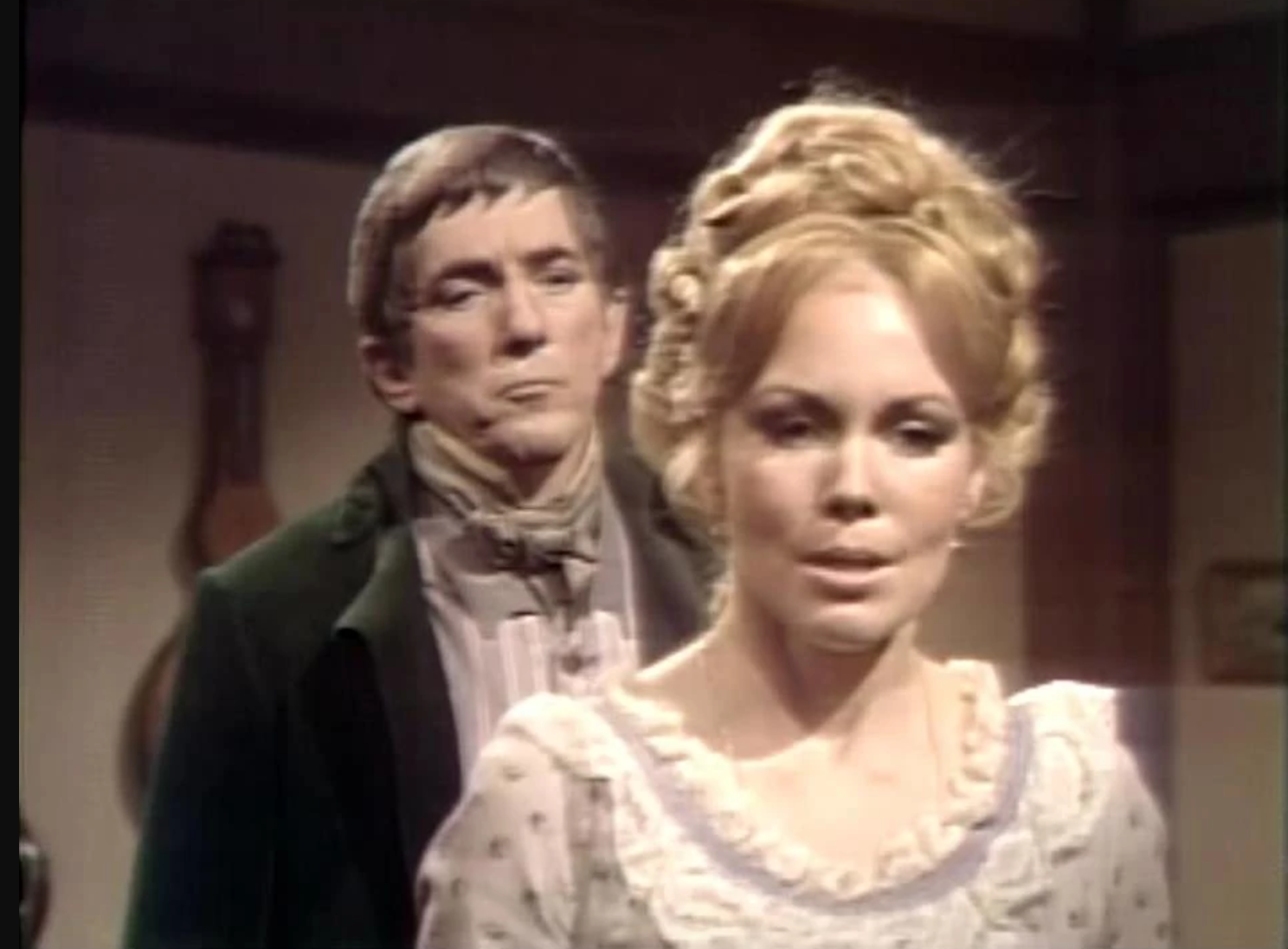
“Barnabas was brought in because I wanted to see exactly how much I could get away with,” Curtis said, “never intending that he would be anything more than a vampire that I kill. I wanted to see how far I could go on the show into the supernatural, and I figured there was nothing more bizarre than a vampire. If it didn’t work, I figured we could always drive a stake into his heart.”
Obviously, things didn’t go exactly as planned.
Barnabas was an instant pop culture sensation, becoming a “hero” of sorts to the viewers, despite the fact that he was quite literally a bloodsucker. Given that popularity, it created a new problem for the show: How do you keep a character around who spends his evenings murdering people? The answer was to make him more sympathetic.
To do that, the show did something unexpected: It shifted back in time to 1795 where we met the pre-vampire Barnabas and the rest of that era’s Collins family (giving the regulars the opportunity to play different characters in what became a true costume drama). In the past, we learned that Barnabas was engaged to be married to Josette du Pres, but had an affair with Josette’s servant, Angelique Bouchard (Lara Parker). When he attempted to end the affair, Angelique, revealing herself to be a witch, cursed him with vampirism, setting him down his long, lonely path. The blast-to-the-past storyline concluded with Barnabas’ father, unable to kill his son, imprisoning him in the coffin that he would be freed from in the present-day narrative.
“We just felt we couldn’t get that much mileage out of a character who is pure evil,” writer Ron Sproat said. “When you’re dealing with two and a half hours a week and you’re seeing a lot of the character, it just has to have more dimension than that.”
The backstory approach worked: Barnabas Collins connected with the audience. “Barnabas was a sympathetic vampire,” Frid said. “He was a man with an addiction who drank blood only to survive. The audience felt pity for him, and many of the women wanted to mother him. Secondly, I’ve always felt that there was a love/hate relationship between the audience — particularly children — and Barnabas. In some ways, he was looked upon as a darker version of Santa Claus; friendly enough that you were intrigued by him, yet mysterious enough that he frightened you.”
3. The casting of Jonathan Frid as ‘undead sex symbol’ almost didn’t happen.
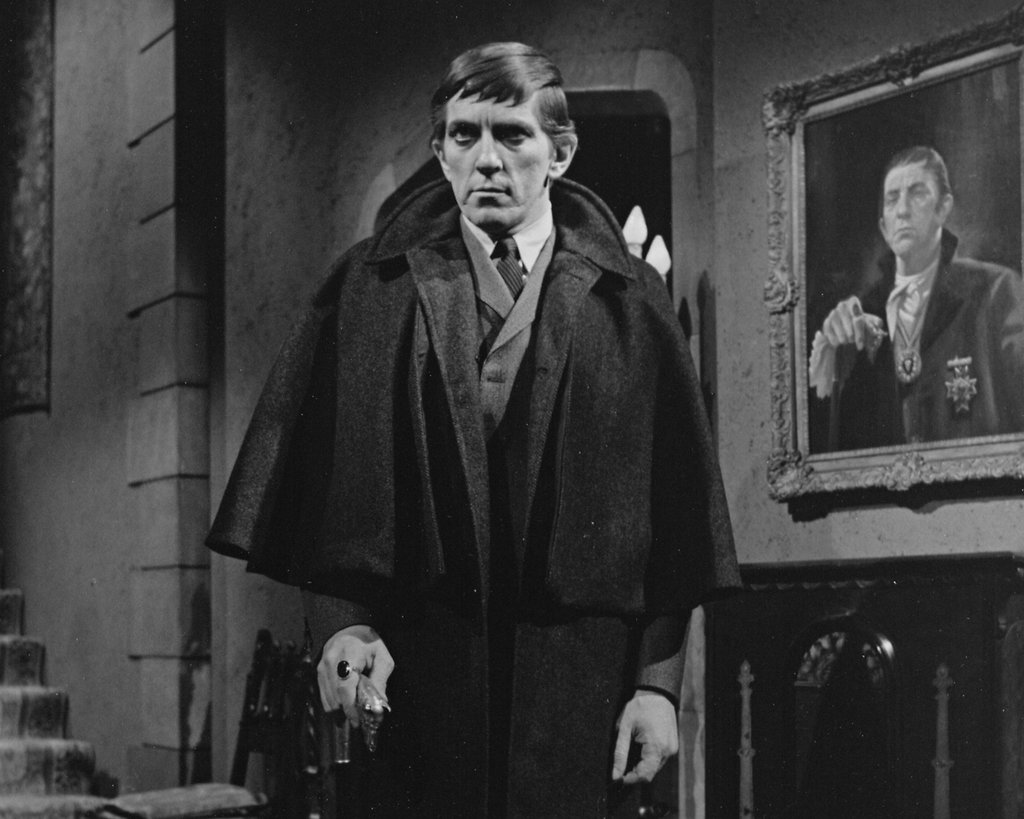
The role of Barnabas Collins went to Canadian actor Jonathan Frid, though Sproat recalled that one close contender was actor/game shot host Bert Convy. “Dan didn’t like that,” he explained, “because it wasn’t scary enough. He handed me a picture of Jon and said, ‘This is our new vampire.’”
For his part, Frid, classically trained, had wrapped up a role in a national tour of the play Hostile Witness, and had come back to his New York apartment to pack things up: He was moving to California to take a position as a professor of drama.
The phone began ringing while he was entering the apartment. It was his agent, telling him about Dark Shadows. He was reluctant to audition, but was told it would be a short gig and extra cash to get him to California. Against his better judgment, he tried out for the role.
“You know the rest of the story,” Frid said. “It was just that freaky phone call. If I had been two minutes later….”
4. DARK SHADOWS was extremely short-lived compared to most soaps.
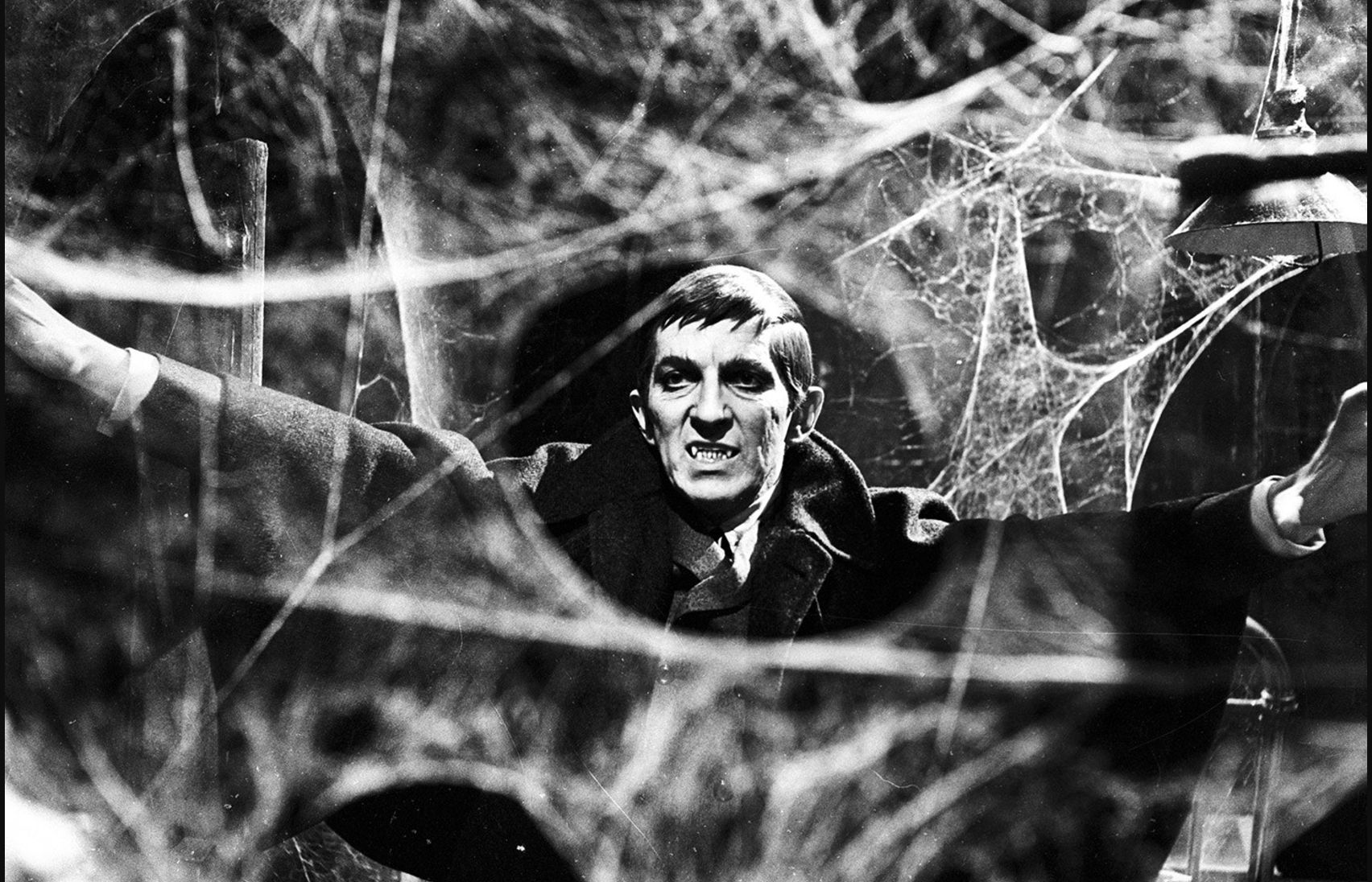
By soap opera standards, Dark Shadows had an extremely short life, running from June 27, 1966 to April 2, 1971, producing 1,225 episodes over the course of those years. (All of which are available on DVD — how many old soap operas can you say that about?) It also spawned wide-ranging merchandise, from board games to trading cards, posters, models, comic books, novels, and Halloween costumes, to a variety of big and small screen spin-offs.
So if it was that popular, why did the show only last five years?
“Because Dan was so insane,” Hall said, laughing. “After a year of success he started to say, ‘We’ve got to get more scares, more romance, more mystery,’ and we finally ended up with plots….we had one plot I didn’t even understand. You needed subtitles to get it. Every plot got stranger and stranger and stranger, and we just ‘out-stranged’ ourselves.”
5. The show was taped in Manhattan.
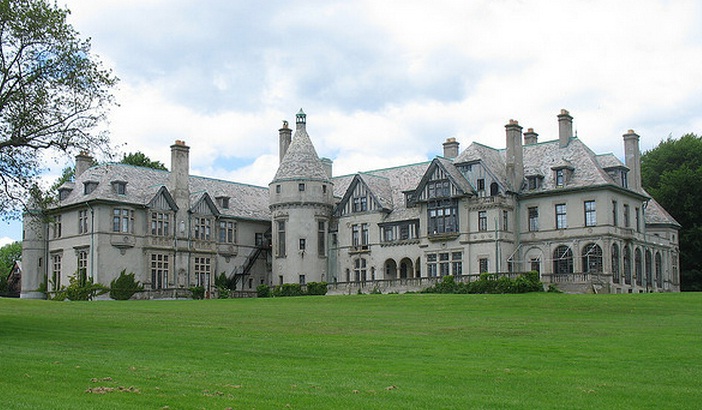
Exteriors of the brooding 40-room Collinwood mansion were shot in Newport, Rhode Island, while footage of the Old House (residence of Barnabas) was obtained in Tarrytown, New York. Essex, Connecticut, doubled for the town of Collinsport. The show itself, however, was shot at the former tiny ABC Studios at 433 West 53rd Street in New York City. Each afternoon when the show finished taping, the stars would exit the studio to be greeted by children and adults who clamored for photographs and autographs.
“We’d come out of this little dinky studio on 53rd Street and there’d be 500 screaming kids outside,” Curtis recalled. “It was unbelievable. I have never seen anything like it. We had the time of our lives in those crazy days. It really was a lot of fun.”
6. The show may have ended, but the franchise definitely didn’t.
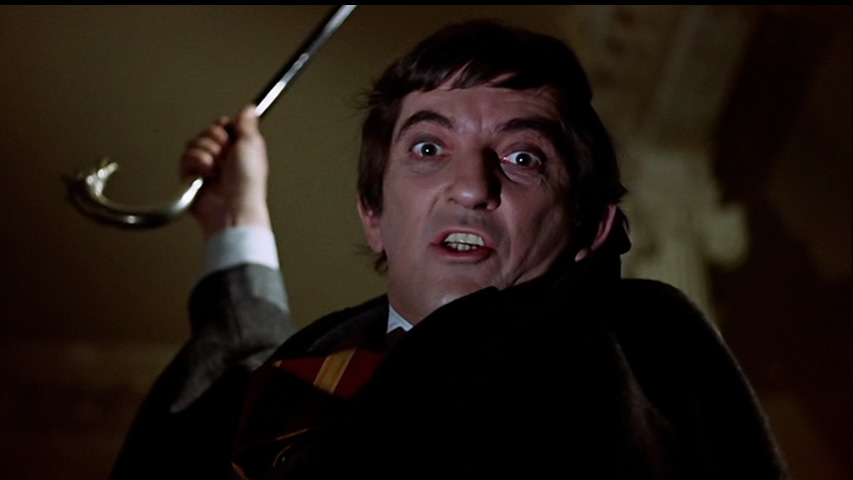
The cast of DARK SHADOWS made the leap to the big screen while the show was still airing in 1970’s House of Dark Shadows. Basically it’s a retelling of the Barnabas storyline, although this time Dan Curtis removed almost all semblances of sympathy from the character.
“The feature film wasn’t done like the soap,” said Curtis. “It was done like a very classy piece of film. It was the same premise, except we killed everybody, which we couldn’t do on the show.”
Laughed Sproat, “Dan finally said, ‘You’re going to do it my way.’”
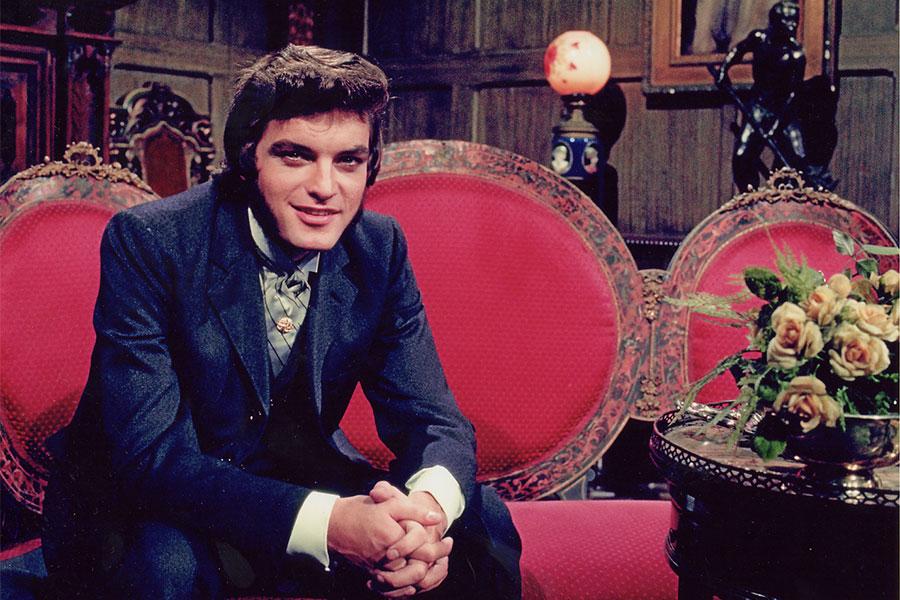
A year later, Night of Dark Shadows, featuring members of the DARK SHADOWS cast, reached theaters, and it used Collinwood as the base of operations, but this time it was a ghost story with new characters (played by the series’ David Selby and Kate Jackson) moving in. Shortly thereafter Selby is possessed by evil spirits tied to the witch Angelique (Parker reprising her role from the show). There was an intent to continue the series as an anthology of sorts with Collinwood remaining the only regular aspect, but those plans ultimately fell apart.
Interestingly, next to Barnabas, Selby became the most popular character on the show. He played Quentin Collins, who went from being a zombie to a werewolf and a Dorian Gray-type. What few people may realize is that Frid was directly responsible for the character’s arrival.
“In 1968, I went to Dan Curtis and said, ‘You’re overworking me. I think you should create another character and give me a run for my money,’” detailed Frid. “He said, ‘You don’t want that,’ and I said, ‘I’d rather have anything than work these hours. Give me some competition.’ They tried two or three things until Selby came along. The ratings were going down at that point, and we were delighted that Selby boosted them. If it hadn’t been for him, the show would have gone off the air in four months. He gave it a much-needed shot in the arm.”
After Night of Dark Shadows, things were quiet at Collinwood until the 1991 one-hour primetime version with a new DARK SHADOWS cast, including Ben Cross as Barnabas. Then there was the 2004 WB pilot that didn’t go to series, and, in 2012, Johnny Depp played Barnabas in the Tim Burton movie version of Dark Shadows, but the less said about that one the better.
There may be a new wave of vampire TV shows on the way — Rice’s The Vampire Chronicles, Let the Right One In, and The Lost Boys among them — but, seriously, how could they possibly compare to the thrill of having Barnabas and the Collins clan entering our homes five days a week? Easy answer: They can’t.
More from ABC Soaps In Depth
Judith Light Reveals How Her Time on ONE LIFE TO LIVE Changed Her Life
